Orxa Mantis Electric Motorcycle First Ride: A Glimmer Of Potential, But It’s Undercooked
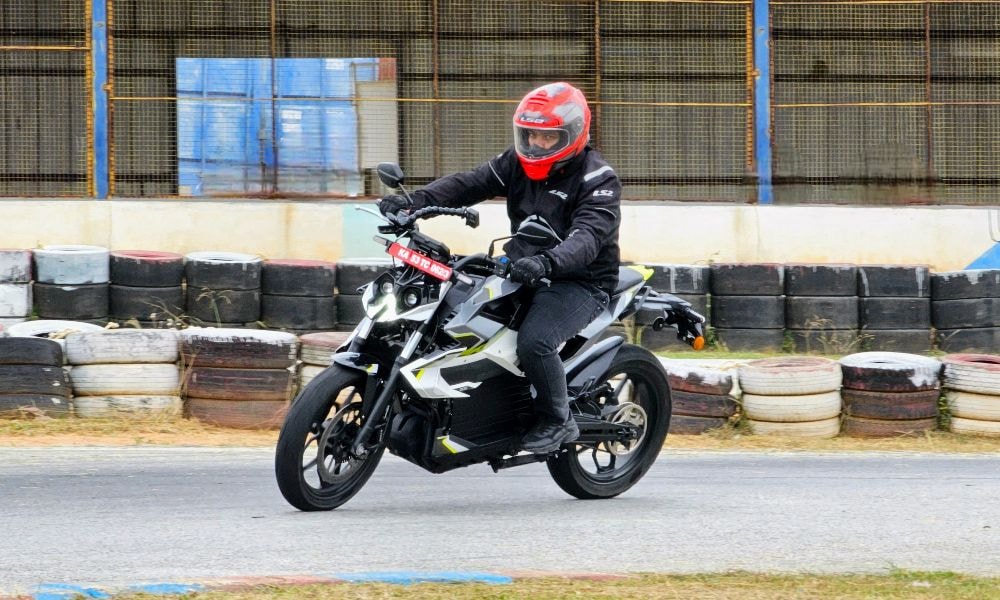
- Orxa Mantis’ BLDC motor has decent poke, but still feels relatively muted.
- Bike benefits from an all-aluminium frame, and feels agile and eager in the corners.
- In its current form, the Mantis lacks finesse, and further fine-tuning is a necessity.
For those who have kept track, the Orxa Mantis has been a long time coming. One of the earliest made-in-India electric motorcycles to be unveiled, Orxa Energies’ Mantis has been in development since 2015, and was shown to the media in 2019 with a radical concept of six swappable batteries. The COVID-19 pandemic delayed the bike’s development further, but the Bengaluru-based start-up showcased another, enhanced iteration in 2022. Now, as 2023 draws to a close, Orxa has revealed what it says is a ready-for-production Mantis (which is also distinctly different from previous iterations), put a price tag on it (Rs 3.60 lakh, ex-showroom) and also opened bookings.
The Mantis has been in development for over 8 years now.
But is it really ready for customers at last? I got a chance to put in a mere five laps astride the Mantis at the Meco go-kart track on the outskirts of Bengaluru to find a clear answer to that question. As this was a brief, track-only ride, there was no opportunity to delve into the range, or the bike's ride quality as such.
Orxa Mantis: First ride impressions
Swinging a leg over the Mantis, the first thing I noticed was that for someone of my height (about 5ft 6in), the bike will have them on their toes. Seat height is 815 mm, but the protruding side panels also make it wide, which makes it difficult to put both feet flat on the ground. You can also feel the bike's weight when you’re trying to manoeuvre it around, but more on that in a bit.
Kerb weight is 182 kg; wheelbase is 1,450 mm.
To get it started, you turn the key in the ‘ignition’ slot, and then, you wait. You can hear the motorcycle’s systems whirring to life, but it’s a good 30 seconds before the display lights up and you can get the motorcycle started. Fold the side stand, switch the kill switch to “on”, press the motor start button and the 5-inch cluster flashes a green ‘Motor On’ message at the top of the screen.
Basic 5-inch TFT relays the essentials, but is a size too small; takes over 30 seconds to start up.
Surprisingly, the Mantis, unlike most other electric two-wheelers, has no ride modes, so you’re riding in a single, default setting. This setting is designed to provide gentle initial acceleration, with Orxa claiming a 0-20 kmph time of 2.7 seconds, which is roughly the time taken by some electric scooters (with half the Mantis’ claimed output) to get to 40 kmph. Throttle response is soft as you set off, but the Mantis surges forward when you dial in more throttle input.
Seat cushioning is firm; larger individuals might be uncomfortable over longer rides because of the yawning gap between the split seats.
The go-kart track is pretty tight and technical, and the highest speed I could manage was 75 kmph down the main straight. While the Mantis was able to get to that speed, power delivery felt disappointingly muted, and it was later confirmed that Orxa had put some measures in place to prevent the BLDC motor (which Orxa says is liquid-cooled, and produces a peak 20.3 kW and 93 Nm) from overheating, which explained its dull and flat characteristics.
The Mantis moves smartly, but doesn't feel like it has the 20.3 kW peak output Orxa claims.
Every time I whacked the throttle open, the Mantis seemed to take a second or so to realise that I had asked for more power, and this lag also extended to the speedometer, which stayed frozen at a certain speed, and then suddenly switched to a completely different figure as the bike went quicker. The software, as it stands, feels at least two steps behind the rest of the motorcycle.
It’s when you first tip the Mantis into a corner that you feel the potential of the package. With a first-of-its-kind all-aluminium frame, the Mantis weighs 182 kg (down from the 200+ kg kerb weight of past iterations), and you can feel how agile it is from the eagerness it shows to turn in. The Mantis holds its line confidently through the corners, and tipping it in is easier than its on-paper weight would suggest. What also aids stability is the Mantis’ long wheelbase (1,450 mm), and grip from the Ceat Zoom tyres on the test bike was sufficient, if not immense.
Aided by its lightweight frame, the Mantis feels eager in the corners; long wheelbase adds stability.
Braking duties are handled by a 320 mm disc brake up front, and a 230 mm rear disc brake. The latter is operated via a foot lever on the right side, and the Mantis has single-channel ABS, which works smoothly. While the brakes themselves do a fair job of shedding speed, feel at the levers is quite flat and wooden.
The riding position is comfortable and not overly committed, but what gets in the way of composure on the bike is its jerky regenerative braking. Orxa has chosen a strong regen setting as default (aimed to recover as much as 10 to 15 per cent of range), but it’s borderline intrusive, as the bike pushes back strongly the moment you roll off the throttle. There are no regen modes either (and no way to switch it off), and in stop-start riding, the constant, jerky pushback from the regen will surely get bothersome after a while in city traffic.
There's no storage space on the Mantis (despite there being a provision for it); fit and finish requires attention.
Fit and finish is also a weak point on the pre-production models handed to the media, with quite a few uneven panel gaps, untidy cabling, average plastics and switchgear, as well as some rough surfaces. For a bike that will cost close to Rs 4 lakh on-road, there’s an urgent need to address elements that rob the Mantis of a premium feel, if it is to stand any chance of luring buyers away from existing options at this price.
Orxa claims the Mantis will regain 80 per cent charge in five hours with the standard 1.3 kW charger.
What’s also not confidence-inspiring is the fact that I had barely a few minutes of actual seat time on the Mantis. Despite Orxa saying that the bikes are not yet road-ready (as they are still in certification), this is not the first time a start-up has conducted media rides within a confined, tightly-controlled setting, and it won’t be the last. What also doesn’t help is Orxa’s unwillingness to reveal how many kilometres of testing have been racked up on this particular iteration of the Mantis, which has a fixed 8.9 kWh battery, unlike the previous iteration, which had six swappable packs.
Ditching the six swappable batteries, the Mantis now has an 8.9 kWh fixed battery; claimed range of up to 221 km.
For now, it’s clear that the Mantis has some potential, but it is not close to being ready for customers in its present state. Orxa maintains that it intends to commence deliveries in Bengaluru by April 2024, but don’t be surprised if the start of deliveries takes even longer, as Orxa has promised to take feedback from these rides on board and make further improvements to the bike, which will almost certainly take a considerable amount of time. Given how much time Orxa has taken to bring the Mantis to life, it’s something of a letdown that the bike is still not where it needs to be for it to find acceptance among potential buyers, and it becomes an even steeper challenge when you remember that a more potent, and more capable, all-electric alternative already exists in the form of the Ultraviolette F77.
Latest News
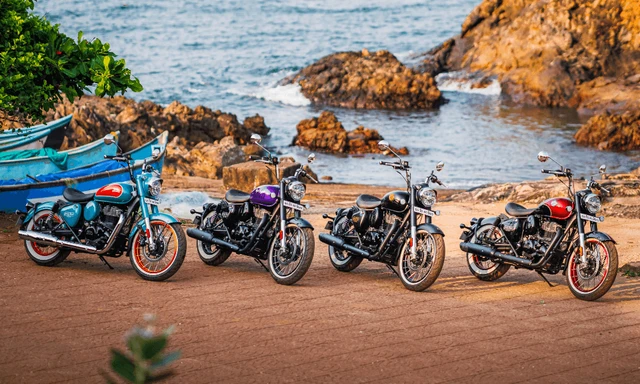 car&bike Team | Jan 12, 2026Updated Royal Enfield Goan Classic 350 Launched: Gets Slip And Assist ClutchThe updated Goan Classic also gets a faster Type-C charging port.1 min read
car&bike Team | Jan 12, 2026Updated Royal Enfield Goan Classic 350 Launched: Gets Slip And Assist ClutchThe updated Goan Classic also gets a faster Type-C charging port.1 min read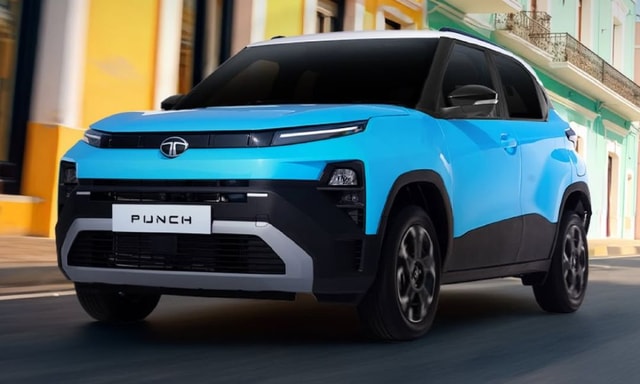 Jaiveer Mehra | Jan 12, 2026Tata Punch Facelift Launch Tomorrow: What To ExpectUpdated internal combustion Punch gets a design in line with its larger siblings as well as a new engine option.3 mins read
Jaiveer Mehra | Jan 12, 2026Tata Punch Facelift Launch Tomorrow: What To ExpectUpdated internal combustion Punch gets a design in line with its larger siblings as well as a new engine option.3 mins read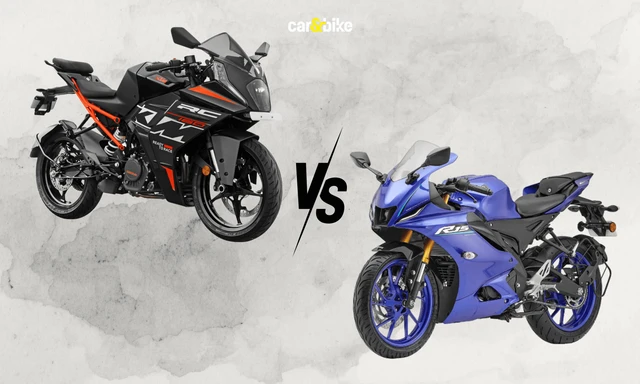 Jafar Rizvi | Jan 9, 2026KTM RC 160 vs Yamaha R15: Specifications, Features, Prices ComparedKTM’s new RC 160 goes head-to-head with the Yamaha R15 in the entry-level sportbike category. Here is how the two fare on paper.1 min read
Jafar Rizvi | Jan 9, 2026KTM RC 160 vs Yamaha R15: Specifications, Features, Prices ComparedKTM’s new RC 160 goes head-to-head with the Yamaha R15 in the entry-level sportbike category. Here is how the two fare on paper.1 min read Amaan Ahmed | Jan 9, 2026Suzuki E-Access Launched At Rs 1.88 Lakh; LFP Battery Promises 95 KM RangeOriginally confirmed for a June 2025 launch, Suzuki's first electric two-wheeler for India has finally arrived almost a year after making its global debut at Auto Expo 2025.3 mins read
Amaan Ahmed | Jan 9, 2026Suzuki E-Access Launched At Rs 1.88 Lakh; LFP Battery Promises 95 KM RangeOriginally confirmed for a June 2025 launch, Suzuki's first electric two-wheeler for India has finally arrived almost a year after making its global debut at Auto Expo 2025.3 mins read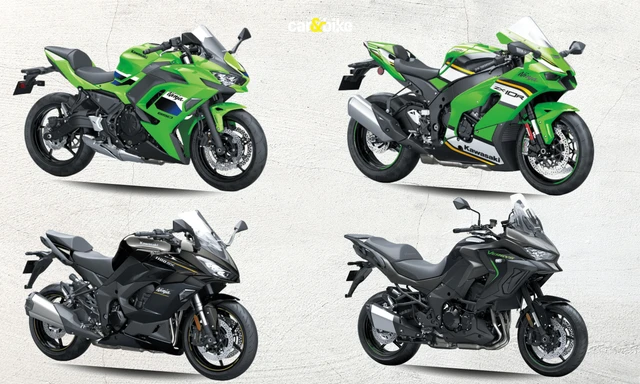 car&bike Team | Jan 9, 2026Kawasaki Ninja, Versys Models Offered With Discounts Of Up To Rs 2.50 LakhThe Ninja ZX-10R is offered with maximum benefits, followed by the Ninja 1100SX and Versys 1100.1 min read
car&bike Team | Jan 9, 2026Kawasaki Ninja, Versys Models Offered With Discounts Of Up To Rs 2.50 LakhThe Ninja ZX-10R is offered with maximum benefits, followed by the Ninja 1100SX and Versys 1100.1 min read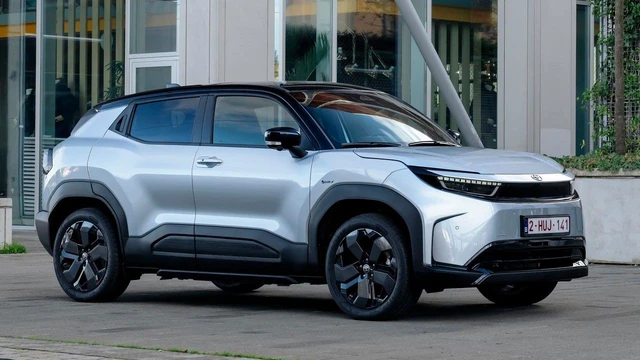 Bilal Firfiray | Jan 9, 2026Toyota Urban Cruiser EV: What To ExpectToyota will be introducing an all-electric vehicle for the first time in India. It is the Toyota-badged version of the soon-to-be-launched Maruti Suzuki e-Vitara, and here’s everything we expect from it.1 min read
Bilal Firfiray | Jan 9, 2026Toyota Urban Cruiser EV: What To ExpectToyota will be introducing an all-electric vehicle for the first time in India. It is the Toyota-badged version of the soon-to-be-launched Maruti Suzuki e-Vitara, and here’s everything we expect from it.1 min read
 Bilal Firfiray | Jan 9, 2026Toyota Urban Cruiser Hyryder: 10,000 km Long-Term ReviewAfter spending over three months and 10,000 km with the Toyota Urban Cruiser Hyryder Hybrid, we were impressed by its real-world mileage, seamless hybrid, practical comfort, and Toyota reliability. Is it the best C-SUV then?5 mins read
Bilal Firfiray | Jan 9, 2026Toyota Urban Cruiser Hyryder: 10,000 km Long-Term ReviewAfter spending over three months and 10,000 km with the Toyota Urban Cruiser Hyryder Hybrid, we were impressed by its real-world mileage, seamless hybrid, practical comfort, and Toyota reliability. Is it the best C-SUV then?5 mins read Seshan Vijayraghvan | Jan 8, 20262026 Mahindra XUV 7XO Review: Big On Tech, Bigger On ComfortThe new Mahindra XUV 7XO is flashier, feature packed, and comes with more advanced tech. But are the changes just incremental or actually substantial?1 min read
Seshan Vijayraghvan | Jan 8, 20262026 Mahindra XUV 7XO Review: Big On Tech, Bigger On ComfortThe new Mahindra XUV 7XO is flashier, feature packed, and comes with more advanced tech. But are the changes just incremental or actually substantial?1 min read Preetam Bora | Jan 10, 2026Simple One Gen 2 First Ride Review: 265 km Claimed Range!The Gen 2 model of Simple Energy’s first electric scooter gets a fair few updates, including new features, tech, more range and lighter weight. We spent a couple of hours with the Simple One Gen 2 to find out if it manages to impress.6 mins read
Preetam Bora | Jan 10, 2026Simple One Gen 2 First Ride Review: 265 km Claimed Range!The Gen 2 model of Simple Energy’s first electric scooter gets a fair few updates, including new features, tech, more range and lighter weight. We spent a couple of hours with the Simple One Gen 2 to find out if it manages to impress.6 mins read Amaan Ahmed | Jan 3, 2026VLF Mobster 135 300 KM Review: Fun But FlawedA 125 cc scooter with Italian design and Chinese genes is a rare combination, and while some may be tempted to dismiss it because of its origins, the VLF Mobster shows 125s can also be exciting – but not without compromises.11 mins read
Amaan Ahmed | Jan 3, 2026VLF Mobster 135 300 KM Review: Fun But FlawedA 125 cc scooter with Italian design and Chinese genes is a rare combination, and while some may be tempted to dismiss it because of its origins, the VLF Mobster shows 125s can also be exciting – but not without compromises.11 mins read Preetam Bora | Dec 30, 2025TVS Orbiter Review: Real-World Performance and Range TestedThe TVS Orbiter is a promising electric scooter promising decent range, practicality and pricing. But is there any reason to avoid it? We spent a few days getting to know it better.9 mins read
Preetam Bora | Dec 30, 2025TVS Orbiter Review: Real-World Performance and Range TestedThe TVS Orbiter is a promising electric scooter promising decent range, practicality and pricing. But is there any reason to avoid it? We spent a few days getting to know it better.9 mins read






















































































































